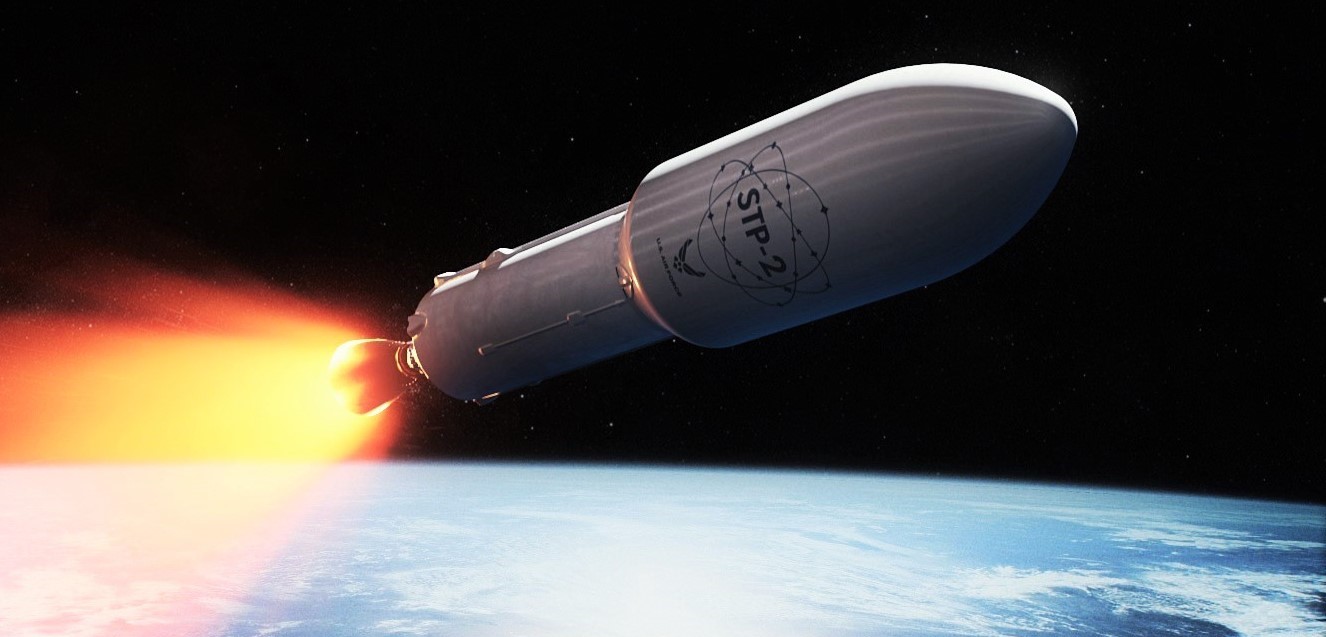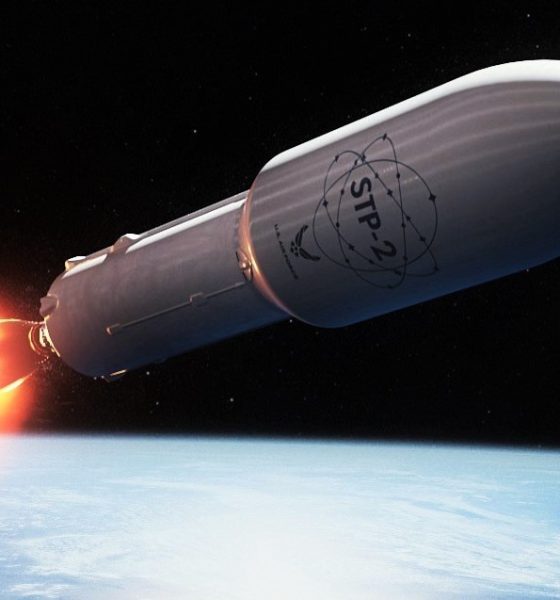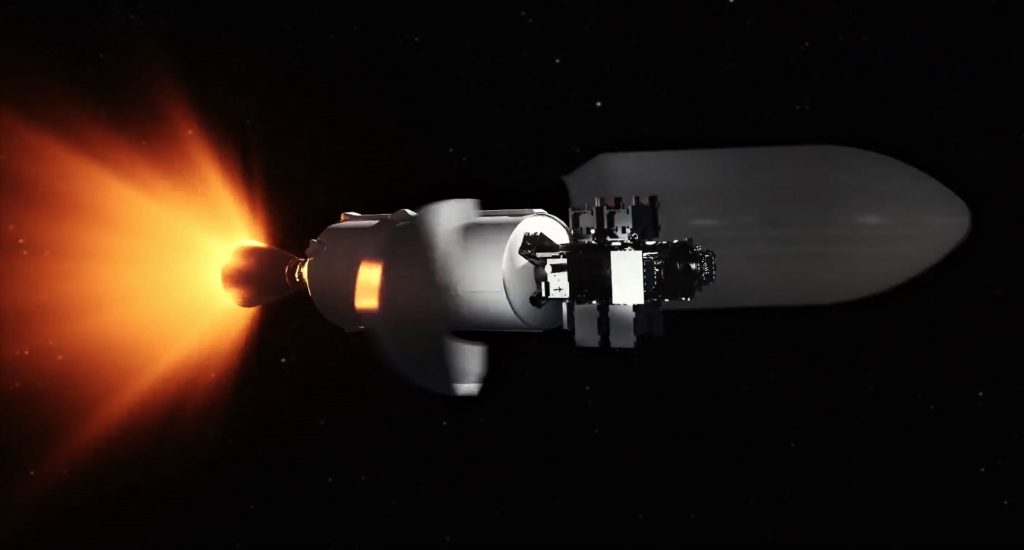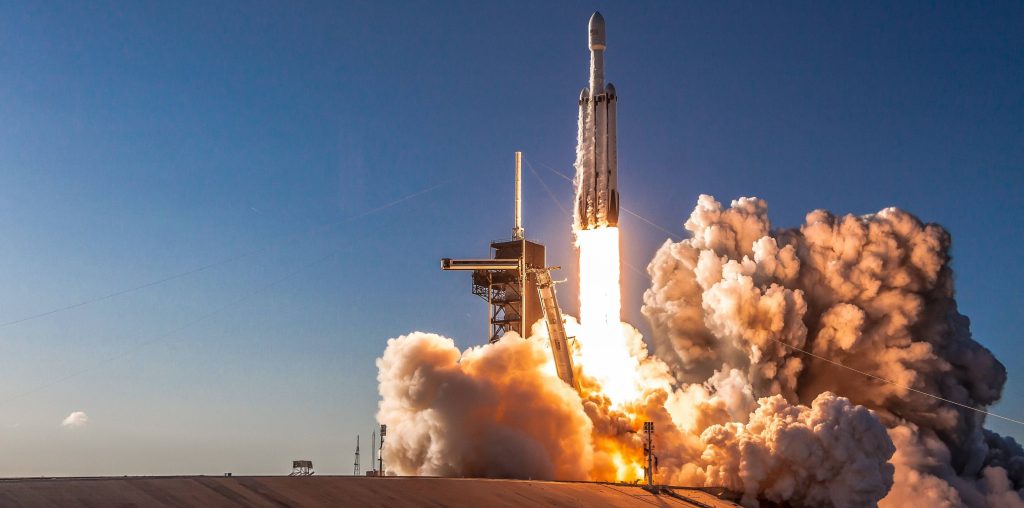

News
SpaceX’s Falcon Heavy flies a complex mission for the Air Force in launch video
SpaceX has gone to unique lengths for the third launch of its Falcon Heavy rocket and made an exhaustive webpage dedicated to the mission, reviewing its importance to SpaceX and the United States and discussing most of its 23 manifested spacecraft.
Known as the US Air Force’s Space Test Program 2 (STP-2) mission, Falcon Heavy Flight 3 will be a critical pathfinder for the US military’s systematic utilization of both Falcon Heavy and its flight-proven boosters.
The STP-2 mission will be among the most challenging launches in SpaceX history with four separate upper-stage engine burns, three separate deployment orbits, a final propulsive passivation maneuver and a total mission duration of over six hours. [It] will demonstrate the capabilities of the Falcon Heavy launch vehicle and provide critical data supporting certification for future National Security Space Launch (NSSL) missions. In addition, [the USAF] will use this mission as a pathfinder for the [military’s systematic utilization of flight-proven] launch vehicle boosters.
SpaceX, April 2019
SpaceX offers a very effective summary of the various challenges presented by Falcon Heavy’s STP-2 mission and third launch. It’s as challenging as it is for one very specific and largely artificial reason. All the way back in 2012, the USAF contracted the launch to give SpaceX a low-risk opportunity to demonstrate specific capabilities the military branch requires before they certify a given rocket to launch high-value payloads. Originally intended to fly STP-2 in mid-2015, Falcon Heavy suffered almost five years of delays during its development, caused by a combination of unexpected technical difficulties and two catastrophic Falcon 9 failures in 2015 and 2016.

After spending the whole of 2017 gradually catching up on delayed customer launches, SpaceX successfully conducted Falcon Heavy’s launch debut on February 6th, 2018. Four months later, the Air Force announced that it had completed the SpaceX rocket’s preliminary certification and awarded the company a $130M launch contract for AFSPC-52, a classified military satellite. According to documents describing the mission, the satellite weighs approximately 6350 kg (~14,000 lb) and needs to be placed into a geostationary transfer orbit (GTO) measuring 35,188km X 185km (21,850 mi X 115 mi).
Conveniently, Falcon Heavy’s commercial launch debut saw the massive rocket deliver the communications satellite Arabsat 6A – weighing ~6450 kg (~14,200 lb) – into an extremely high GTO, almost 90,000 km X 330 km (56,000 mi X 205 mi). In simpler terms, Falcon Heavy Flight 2 was an almost perfect demonstration that SpaceX is more than capable of successfully launching AFSPC-52, a milestone that could come as early as H2 2020.


The STP-2 mission should help to boost the US military’s confidence in Falcon Heavy even further. The mission is comprised of 23 separate satellites from a dozen or so different groups, ranging from a NOAA weather satellite constellation to a NASA-built atomic clock. The purpose of such a varied range of payloads is to have SpaceX’s Falcon upper stage (S2) place three separate sets into three distinctly different Earth orbits, a challenge that will require the rocket to ignite its Merlin Vacuum engine four times and survive in space for more than six hours.
SpaceX has been testing this critical long-coast technology since at least February 2018, when Falcon Heavy’s debut included a six-hour coast of the upper stage to send a Tesla Roadster on an Earth escape trajectory. SpaceX completed that test successfully and said Roadster is now orbiting the sun on a trajectory that regularly reaches beyond the orbit of Mars. SpaceX has continued to test the longevity of its universal Falcon upper stage, including a handful of on-orbit demonstrations after completing customer missions.
Aside from opening the door for new areas of competition in military launch procurement, successfully proving the long-coast capabilities of the Falcon upper stage will also mean that SpaceX can offer them commercially. Military launches often require long coasts in order to get spacecraft to their operating orbits as quickly as possible, typically involving an upper stage burning at the top of a transfer orbit to circularize said orbit. This capability can also be of significant value to non-government customers, however, as the faster a satellite can get to its operational orbit, the faster its owner can start using it to generate revenue. Traditionally, most commercial geostationary communications satellites are sent to transfer orbits, raising one end of the orbit (apogee) but leaving the low end (perigee) in low Earth orbit. Satellites then use their own propulsion systems to circularize their orbits before they can begin commercial operations.
It’s safe to assume that SpaceX is interested in commercially offering services like those above to make Falcon Heavy even more competitive with the likes of ULA’s Atlas/Delta/Vulcan rockets and Arianespace’s Ariane 5 and Ariane 6. The US military will almost certainly be the anchor customer, but a reliable upper stage with long-coast capabilities may one day allow Falcon Heavy to routinely launch commercial satellites directly into circular orbits or send flagship NASA spacecraft into deep space. But first, STP-2. According to Taiwan space agency NSPO, involved in the mission through their Formosat-7 constellation (also known as NOAA’s COSMIC-2), Falcon Heavy could launch STP-2 as early as June 22nd.
SpaceX’s dedicated STP-2 webpage can be viewed here.
Check out Teslarati’s Marketplace! We offer Tesla accessories, including for the Tesla Cybertruck and Tesla Model 3.

Elon Musk
Elon Musk’s xAI closes upsized $20B Series E funding round
xAI announced the investment round in a post on its official website.

xAI has closed an upsized $20 billion Series E funding round, exceeding the initial $15 billion target to fuel rapid infrastructure scaling and AI product development.
xAI announced the investment round in a post on its official website.
A $20 billion Series E round
As noted by the artificial intelligence startup in its post, the Series E funding round attracted a diverse group of investors, including Valor Equity Partners, Stepstone Group, Fidelity Management & Research Company, Qatar Investment Authority, MGX, and Baron Capital Group, among others.
Strategic partners NVIDIA and Cisco Investments also continued support for building the world’s largest GPU clusters.
As xAI stated, “This financing will accelerate our world-leading infrastructure buildout, enable the rapid development and deployment of transformative AI products reaching billions of users, and fuel groundbreaking research advancing xAI’s core mission: Understanding the Universe.”
xAI’s core mission
Th Series E funding builds on xAI’s previous rounds, powering Grok advancements and massive compute expansions like the Memphis supercluster. The upsized demand reflects growing recognition of xAI’s potential in frontier AI.
xAI also highlighted several of its breakthroughs in 2025, from the buildout of Colossus I and II, which ended with over 1 million H100 GPU equivalents, and the rollout of the Grok 4 Series, Grok Voice, and Grok Imagine, among others. The company also confirmed that work is already underway to train the flagship large language model’s next iteration, Grok 5.
“Looking ahead, Grok 5 is currently in training, and we are focused on launching innovative new consumer and enterprise products that harness the power of Grok, Colossus, and 𝕏 to transform how we live, work, and play,” xAI wrote.
Investor's Corner
Tesla gets price target bump, citing growing lead in self-driving

Tesla (NASDAQ: TSLA) stock received a price target update from Pierre Ferragu of Wall Street firm New Street Research, citing the company’s growing lead in self-driving and autonomy.
On Tuesday, Ferragu bumped his price target from $520 to $600, stating that the consensus from the Consumer Electronics Show in Las Vegas was that Tesla’s lead in autonomy has been sustained, is growing, and sits at a multiple-year lead over its competitors.
CES 2026 validates Tesla’s FSD strategy, but there’s a big lag for rivals: analyst
“The signal from Vegas is loud and clear,” the analyst writes. “The industry isn’t catching up to Tesla; it is actively validating Tesla’s strategy…just with a 12-year lag.”
The note shows that the company’s prowess in vehicle autonomy is being solidified by lagging competitors that claim to have the best method. The only problem is that Tesla’s Vision-based approach, which it adopted back in 2022 with the Model 3 and Model Y initially, has been proven to be more effective than competitors’ approach, which utilizes other technology, such as LiDAR and sensors.
Currently, Tesla shares are sitting at around $433, as the company’s stock price closed at $432.96 on Tuesday afternoon.
Ferragu’s consensus on Tesla shares echoes that of other Wall Street analysts who are bullish on the company’s stock and position within the AI, autonomy, and robotics sector.
Dan Ives of Wedbush wrote in a note in mid-December that he anticipates Tesla having a massive 2026, and could reach a $3 trillion valuation this year, especially with the “AI chapter” taking hold of the narrative at the company.
Ives also said that the big step in the right direction for Tesla will be initiating production of the Cybercab, as well as expanding on the Robotaxi program through the next 12 months:
“…as full-scale volume production begins with the autonomous and robotics roadmap…The company has started to test the all-important Cybercab in Austin over the past few weeks, which is an incremental step towards launching in 2026 with important volume production of Cybercabs starting in April/May, which remains the golden goose in unlocking TSLA’s AI valuation.”
Tesla analyst breaks down delivery report: ‘A step in the right direction’
Tesla has transitioned from an automaker to a full-fledged AI company, and its Robotaxi and Cybercab programs, fueled by the Full Self-Driving suite, are leading the charge moving forward. In 2026, there are major goals the company has outlined. The first is removing Safety Drivers from vehicles in Austin, Texas, one of the areas where it operates a ride-hailing service within the U.S.
Ultimately, Tesla will aim to launch a Level 5 autonomy suite to the public in the coming years.
Elon Musk
Elon Musk’s Biggest Revelations on AI, Robots, and the Future of Work from the Moonshots Podcast

Elon Musk’s appearance on the Moonshots with Peter Diamandis podcast was packed with bold predictions, candid admissions, and surprising tech insights. The nearly three-hour conversation covered everything from artificial intelligence to humanoid robots, geopolitics, and the future of work. Here are the top 10 most intriguing takeaways:
-
Aggressive AGI Timeline Predictions
Musk offered a detailed view on when artificial general intelligence (AGI) could emerge, suggesting it may arrive sooner than many expect, emphasizing both transformative potential and risks.
-
U.S. vs. China in the AI Race
He discussed the strategic competition between the United States and China over AI development, noting that geopolitical dynamics will shape how and who leads in the next decades.
-
Future of Job Markets
Musk touched on how AI and automation could reshape employment, predicting massive boosts in productivity alongside potential disruptions in traditional work structures.
-
Clean Energy Transition
A recurring theme was the role of clean energy in future economies, with Musk reiterating the importance of scaling sustainable power generation and storage.
-
Humanoid Robots Are Coming
On the podcast, Musk elaborated on Tesla’s work on humanoid robots, hinting at timelines and applications that go beyond factories to general-purpose assistance.
-
Tesla Roadster “Last Human-Driven Car”
Outside the core discussion topics, Musk teased features of the upcoming Tesla Roadster — calling it “the best of the last of the human-driven cars” and suggesting safety won’t be its main selling point.
-
The Role of AI in Clean Energy and Robotics
Linking AI to both energy optimization and robotics, Musk explained how smarter systems could accelerate decarbonization and task automation across industries.
-
U.S. Innovation Leadership
Musk argued that maintaining American leadership in key tech sectors like AI, space, and robotics should be a national priority, with thoughtful policy and investment.
-
Job Creation vs. Job Elimination
While acknowledging automation’s disruptive effects, he also outlined scenarios where new industries and opportunities could emerge, particularly in AI, space, and advanced manufacturing.
-
Long-Term Vision for Humanity
Throughout the conversation, Musk revisited his long-term philosophical views — including a belief in humanity’s responsibility to become a multi-planetary and technologically empowered species.
Whether you agree with Musk’s optimism or not, the podcast offers a window into the thinking of one of the most influential figures in tech today, in and why his visions continue to spark debate and inspiration.








